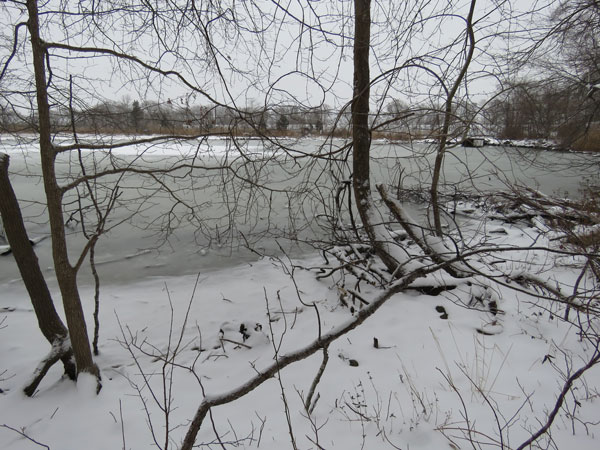
One can only hide from the cold for so long. One’s mind needs to be outdoors! One’s spirit needs simple things. It snowed most of the day on Thursday and Friday and when I woke up at 4 a.m. Saturday morning there were still flurries dancing around. We went for a walk in the scattered snow showers on Friday, with about five inches of the white stuff on the ground. Not wanting to drive anywhere, we walked in the woods and along the creek behind our condo complex.
I spotted a new bird, for me, a white-throated sparrow! She was not cooperating about posing very much but I was happy to get the above picture. One musn’t be greedy. I wonder what she was eating.


A mourning dove landed on a branch and eyed me. I thanked her for letting me see the coloring under her tail. Another new thing for me to see. And then she knocked some snow off the branch — yes dear little dove, I did see you do that. 😉


The creek was mostly frozen over. Tim spotted three gulls out on the ice. Two waiting for an opportunity and one devouring a fish. One always wonders who stole it from who…




How surely gravity’s law,
strong as an ocean current,
takes hold of even the smallest thing
and pulls it toward the heart of the world.
Each thing —
each stone, blossom, child —
is held in place. …
This is what the things can teach us:
to fall,
patiently to trust our heaviness.
Even a bird has to do that
before he can fly.
~ Rainer Maria Rilke
(Rilke’s Book of Hours: Love Poems to God)


My mood improved 100% by the time we returned home. Pretty flurries just continued floating through the sky all morning and afternoon, until dark, still there every time I looked up from my book. I have finished reading The Bear and the Nightingale by Katherine Arden and have started on The Girl in the Tower, the second book in the Winternight trilogy. Perfect books for winter.















































